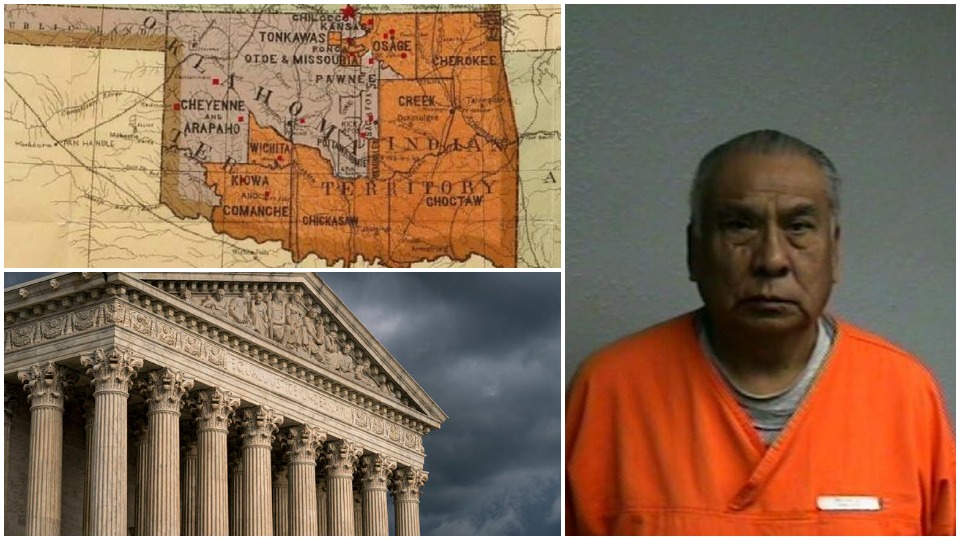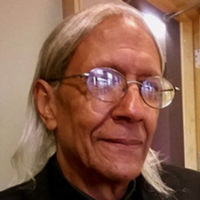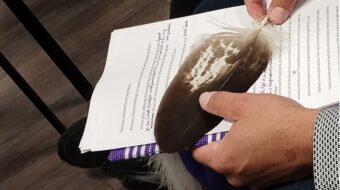
The case of McGirt v. Oklahoma sits at the top of the Supreme Court docket as the Indian law case that will decide the issue of whether eastern Oklahoma will be returned to reservation status. Oral arguments in this matter had been scheduled for April 21, but the Supreme Court delayed the hearing to June due to COVID-19, but has now announced McGirt will be heard on May 11, 2020, presumably by teleconference.
This issue began with what is now known as the case of Sharp v. Murphy. This cause of action was previously known as Carpenter v. Murphy and Royal v. Murphy to reflect that this case has been pending through three different wardens in the Oklahoma penal system.
Some minimal background in this matter is helpful for the uninformed. The petitioner who originally raised this issue was Patrick Wayne Murphy, an enrolled member of the Muscogee Creek Nation (MCN) of Oklahoma, convicted of murder in Oklahoma state court in 2000.
Indian Country had been waiting on the U.S. Supreme Court to reach a decision in the case of Sharp v. Murphy. The Court, if ruling according to firmly established precedent, would have to return three million acres of eastern Oklahoma to the Muscogee Creek Nation, and as a monumental ripple effect would result in the return of an additional 16 million acres to the other four southern nations—the Cherokee, Choctaw, Chickasaw, and Seminole—forcibly removed, in the 19th century, from their ancient homelands.
These nations, collectively and historically called the Five Civilized Tribes (a term of colonial European origin, unpleasant because of its implicit racism, better replaced by Five Tribes or Five Southern Tribes) are sovereign governmental entities with outstanding political impact.
The argument of the Murphy case is that the Muscogee Creek Nation, where the crime for which Murphy was convicted occurred, was never disestablished. Therefore, Murphy, who is an enrolled tribal citizen, should never have been tried in state court as only federal courts have jurisdiction under the Major Crimes Act of 1885. The case went to the United States Court of Appeals for the 10th Circuit in Denver, which ruled in favor of Murphy. The state of Oklahoma appealed this decision to the Supreme Court.
The overarching issue is whether most of eastern Oklahoma is still the reservations of the Five Tribes. The Court could not reach a decision in its last term as it was hopelessly deadlocked 4-4. The ninth Justice, Neil Gorsuch, who has extensive expertise in American Indian law and could have broken the tie, recused himself from the matter because he participated in the case when it was heard before the 10th Circuit Court on which he sat at that time.
On the last day of the Supreme Court’s last term on June 27, the Court announced it would rehear arguments in Sharp v. Murphy in its new term which started in October. But that never happened, probably because the deadlock would not be broken as long as the court was minus a judge.
This brings in McGirt v. Oklahoma, involving the same Indian law issues, with an appeal from an Oklahoma state court conviction, that would be heard by the full nine-member court. The crimes in this case also were committed within the historic boundaries of the MCN.
This new case on the docket involves Jimcy McGirt, a member of the Seminole Nation who was convicted of sex crimes against a child by the state of Oklahoma within the historic Indian boundaries in 1997. Based on the decision issued by the 10th Circuit, McGirt argued that only the federal government could prosecute him. The McGirt litigation has the same issues as the Murphy case. Do the 1866 territorial boundaries of the Muscogee Creek Nation within the former Indian Territory of eastern Oklahoma still constitute an “Indian reservation” today under federal law?
Like Murphy, McGirt argues that the MCN continued to exercise sovereignty after Oklahoma statehood. The case law is in favor of the Indigenous petitioner, set by Supreme Court precedents beginning with Solem v. Bartlett (1984), which held that the opening up of reservation lands for settlement to non-Indians does not constitute the required Congressional intent to disestablish or to diminish reservation boundaries. The 10th Circuit found that all three million acres of the MCN reservation, whether owned by Indians, non-Indians, state or city governments, was still “Indian Country.” The MCN reservation was still in existence!
In another later case, Nebraska v. Parker (2016), involving the same issues, the Supreme Court took into account other factors in reaching its decision which can be used in the McGirt case and will identically relate to the arguments raised in Murphy. The Court ruled that the “demographic history” of the land in question could be examined (whether there was still a Native presence on the land in contention).
The Court first looked at the issue of non-Indian presence on the land and concluded that this was not determinative in reaching a decision. The Court also found that the Omaha Tribe in Nebraska had been absent from the land for 120 years and had not enforced its laws or offered any services in the area. But still, the Court found that it could not override the lack of explicit Congressional intent to diminish the reservation. The Court found in favor of the Tribe, despite the lack of Native presence and services. In reference to eastern Oklahoma, in regard to Native presence and the offering of services, there is just the opposite demographic situation.
The issue of Indian presence and services offered in the matter of eastern Oklahoma works overwhelmingly in favor of the Indigenous nations. Eastern Oklahoma is home to tens of thousands of Native Americans with a huge social, economic, and cultural impact on the region.
Additionally, the governments of the Five Southern Tribes are functioning polities exercising an outstanding sovereign presence encompassing extensive social services and law enforcement entities. The Five Tribes are justly awaiting the rightful return of tribal lands taken by the federal government in a most egregious violation of law and sacred treaties circa the late 19th and early 20th centuries.
In the Murphy case, which features essentially the same arguments presented in the McGirt matter, the petitioner contended that the land on which the crime was committed was still part of the MCN Reservation guaranteed in the Treaty of 1866. When Murphy went before the 10th Circuit, the court ruled that it could not find any statute diminishing or disestablishing the reservation. There was no Congressional intent to end the reservation. The reservation still existed. The Supreme Court should have found it easy to reach a decision.
In Solem, the Supreme Court established three principles to determine Congressional intent to diminish or disestablish a reservation. First, only Congress has the authority to diminish reservation boundaries. The Court stated that “once a block of land is set aside for an Indian reservation and no matter what happens to the title of the individual plots within the area, the entire block retains its reservation status until Congress explicitly states otherwise.” Second, the Court ruled that the intent to diminish or disestablish will not be lightly presumed. Since only Congress has this power, it must clearly state the intent to disestablish or diminish or make an overt statement from which the intent can be inferred. Third, the intent to diminish or disestablish can be determined by legislative history.
An example of diminishment is the case of Hagen v. Utah (1994), where the Court, using the principles laid down in Solem, ruled that Congress had intentionally diminished reservation lands with surplus land acts affecting the Uintah Reservation in northeastern Utah. The Court decided that the specific language “be restored to the public domain” in the Hagen case in reference to the surplus lands unambiguously indicated that the area in dispute was not to remain reservation land, but in fact reduced the reservation boundaries.
The principles of Solem, presented to determine whether Congress had disestablished the MCN reservation, came forth in Sharp v. Murphy as to whether a Native person convicted of murder should be under the state of Oklahoma’s jurisdiction if the reservation was disestablished or the federal government if the reservation was still extant. The 10th Circuit, applying Solem, ruled that Congress did not disestablish the MCN Reservation. Again, the decision had been scheduled for rehearing by the Supreme Court in its 2019 term as it had deadlocked 4-4 unable to reach a decision. Subsequently, the Court left Murphy in legal limbo and elected to hear the McGirt case on the same overarching issues.
Again, in the area of eastern Oklahoma being contested, there is a major Indian presence—the Five Tribes—that has been extant in the disputed area for over 180 years. They contribute millions of dollars to the economy of the state every year. For example, the Cherokee Nation alone contributed from gaming operations $18 million in revenue to the state in the last fiscal year, and some $116 over the last eight years. Overall, the Cherokee Nation contributed in 2019 almost $2.2 billion into the state economy from its businesses by way of employment, labor income, and production of goods and services.
Additionally, the Cherokee health system takes the burden off overworked private and state facilities. The Nation also puts millions of dollars into economic development for small towns in the region. For pre-K and higher education, more millions have been provided by the Nation. The Cherokee Nation also builds public roads and bridges and brings clean and reliable water to the region’s rural areas. Together, the Five Tribes provide firefighters, paramedics, and police officers to rural Oklahoma communities that, otherwise, they could not adequately provide on their own.
There is also the issue (although not addressed at this time) of the legality of the attempted permanent dismantling of the governments of the Five Southern Tribes by the federal government over 100 years ago. This brings forth the huge related issue of whether the U.S. government actually has plenary power over U.S. Indigenous nations.
In this regard, most notably Supreme Court Justice Clarence Thomas has his own serious doubts of U.S. plenary power over Native nations, something which he has raised over the years. In 2004, Thomas took the unheard of step of directly and vehemently challenging the Congressional claim of plenary power over Indian affairs. In his concurring opinion in United States v. Lara (2004), he wrote: “I cannot agree that the Indian Commerce Clause provides Congress with plenary power to legislate in the field of Indian affairs. At one time, the implausibility of this assertion at least troubled the Court, and I would be willing to revisit the question.”
Also, questioned by Thomas was the constitutionality of Congress’s 1871 law ending the long established practice of treaty-making with Indigenous nations as infringing on the constitutional powers of the executive branch. The core of Thomas’s concern is that federal Indian law would remain constrained in a maze of confusion and contradictions between two opposing principles: On the one hand, Congress possesses plenary power over Indian nations, while on the other hand, Indigenous nations have retained inherent self-determination as sovereign, independent states.
The retention of inherent sovereignty would render the exercise of plenary power illegal. This is earthshaking. The ramifications are huge. The paramount issues being raised under U.S. and international law are respectively: Does the Indian Commerce Clause give Congress plenary power over Indigenous nations? Does the assertion of military conquest confer plenary power over Indigenous peoples?
Justice Thomas said further in Lara: “The Court should admit that it has failed in its quest to find a source of Congressional power to adjust tribal sovereignty.” This is of potentially seismic importance. Lack of plenary power would have enormous, monumental consequences for the entire country.
In the meanwhile, the legal duty and moral obligation of the Supreme Court is crystal clear: Return eastern Oklahoma to the Five Southern Tribes.












Comments